Peony bushes are herbaceous perennial floriferous plants with a single, large, colorful, aromatic flower at the end of the stem. They are one-fourth to a meter tall and are found in Asia, Europe, and North Western America. They are usually grown as ornamental plants, but also come in handy for medicinal purposes.
These flowers grow well in a sunny location with proper shade during the hottest seasons that have good air circulation and well-drained soil. While fall is the best time to plant them, they need cold weather when they are dormant, and finally bless the gardens with flowers during springtime.
Bonide Captain Jack's Neem Oil is a MULTI-PURPOSE BUG KILLER – Bonide Neem Oil is a perfect pest control solution for any garden dealing with mites, flies, mildew, and more. This product is a three-in-one fungicide, miticide, and insecticide.
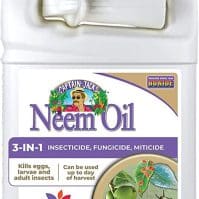
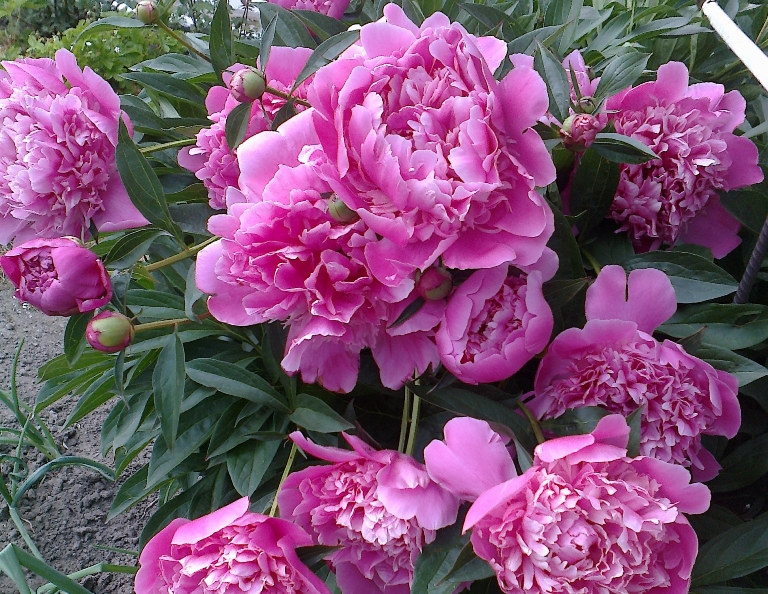
Peonies are adaptable generally, but may encounter some diseases when proper and optimal conditions are not met. Various diseases that peonies are prone to, have been discussed along with the right way to care for them and help them dodge any factor leading to disturbances in their health. Common diseases that can potentially affect peonies are addressed below.
Powdery Mildew
What does it look like?
Powdery mildew is a fungal disease that makes the leaves of the plant look dusty by forming a white covering over the leaves and stems. A white powdery film on the plant rings the alarm. Though this disease has been affecting lots of other plants, peonies have stayed out of its reach for a long time. Quite recently, gardeners have been complaining of the disease, and it’s likely to appear during summertime. Mildews are formed when the fungi responsible for this disease colonize on the leaf surface by traveling through wind.
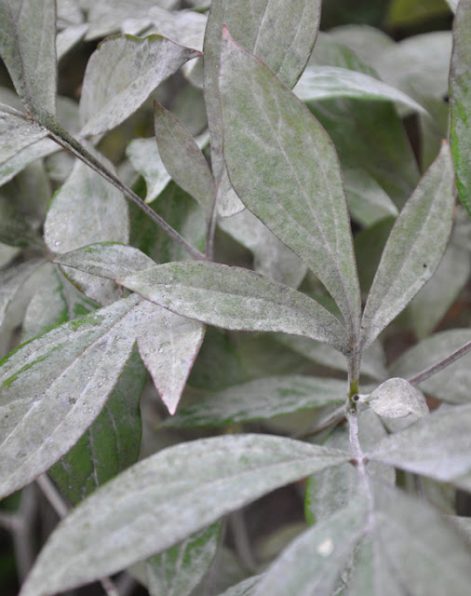
What causes it?
Powdery mildews are caused by various types of fungi out of which Podosphaera xanthii is the most common culprit. Conditions, like moderate temperature, moisture, and shade are ideal for its germination and growth. They hinder the process of photosynthesis and cause the leaves to fall off prematurely.
How to treat it
Despite appearance, powdery mildew is rarely fatal. However, once it attacks the plant, treatment is difficult in severe cases. This makes prevention important. Since shady and humid conditions help the fungi grow, choosing a location with full sun, and proper air circulation to prevent moisture is vital. It’s best to water peonies in the morning.
As powdery mildew can show up in spite of the preventive measures that are taken, it’s suitable to treat them with fungicides. Progressive stages of the infection can be treated using horticultural oil. A home remedy that can be used is mixing up a tablespoon of baking soda, liquid dish soap without bleach, and horticultural oil in a gallon of water. This should be sprayed on the plant every ten to fourteen days. The spray shouldn’t be used in hot and sunny weather. It’s always suggestible to test it on a part of plant before actually using it.
Botrytis Blight
Disease’s appearance
Botrytis blight is a fungal disease that causes a covering over new shoots, buds, and stem. It forms a thick gray mold around the parts it infects, which is formed by fungal spores. The ideal environment for botrytis blight to develop is in damp, rainy conditions.
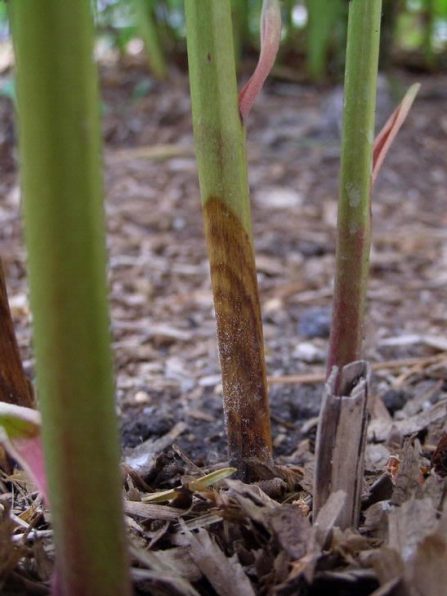
Disease’s cause
This disease is specifically caused by Botrytis Paeoniae in peony plants. The fungi surround young shoots or buds and form a gray covering which slowly kills the infected part. A little after the fungus attacks, the affected area turns brown/black, dries off, and dies.
Treatment of the disease
The disease can be prevented from occurring by avoiding excessively watering, or leaving the plant moist. Special care has to be taken in fall. Fungicides can also be used to protect the plant if the disease has been a recurring problem. The key ingredients used in these fungicides are generally neem oil (Azadirachta indica), copper, and Serenade®.
One such fungicide product you may want to consider is Captain Jack's Neem Oil. It is a multi-purpose pest control product that works as a fungicide for plant blight but also as an insecticide and miticide to help control insects, mites, and even ticks in your garden.
This 3-in-1 pest control is perfect for organic gardening as it is made with all natural Neem Oil. You don't have to worry about harsh chemicals being used on your food garden and vegetables. It is a perfect choice for fruits, herbs, vegetables, delicate roses, even indoor houseplants.
Best Price on Bonide Captain Jack's Neem Oil HERE
Parts that have been heavily infected and seem hopeless should be removed from the plant. This should be actively carried out in fall in order to ensure that it doesn’t spread to other parts or plants. However, sanitation should not be practiced in rainy seasons or when the plant is moist because there’s a higher chance of the fungi spreading.
White Mold
How to identify it
White mold, which is also called Southern blight, is a fungal disease. When the fungi infect the plant, tissues at the crown of the plant start rotting; leaves turn yellow, and soon die. It starts off in the summer by causing discoloration in leaves; during the rains, it forms a white web-like cottony covering. It’s progressive to the extent that it can destroy the entire plant.
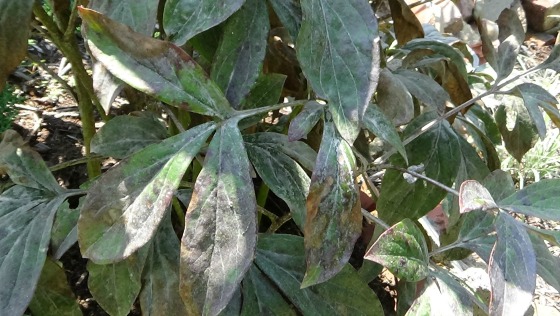
What causes it?
Sclerotinia sclerotiorum causes white mold in peonies. The disease starts from the crown of the plant and ends the plant’s life by advancing up to the roots. A temperature of 30-35 degrees Celsius, along with rains, provides ideal conditions for the growth of the fungi.
Treating it
Since white mold affects the entire plant, it should be uprooted in case of infection. The soil in the infected area should be replaced with healthy soil. If you choose not to replace the soil, make sure it is solarized by covering the area with transparent plastic and leaving it for 2-3 months in the heat.
Fungicides can be used to prevent the disease in peonies. Generally, these fungicides come with mancozeb and thiophanate methyl (Cleary 3336). The tools used for the infected plant should be strictly sterilized as the fungus can easily spread around.
Viruses
Various viruses infect peony bushes forming light and dark green spots on leaves, causing stunted growth, curling of the leaves, and ring spots. The light and dark green coloration is innocuous. Warning signs are evident when you notice dwarfing of the plant and disturbances in chlorophyll production.
The above mentioned dysfunctions are primarily caused by viruses, like alfalfa mosaic viruses, tobacco rattle, and tomato spotted wilt. It’s spread by mites and insects or through the tools used. No treatment is required in case of spotting; but if dwarfing is seen, the plant should be removed.
Phytophthora Blight
What does it look like?
Phytophthora blight is yet another fungal disease. You can identify it if there is darkened, leathery appearance on the stem around the soil-line. The plant may even undergo rotting of the crown and roots, which eventually leads to the death of plant. Like every other fungal disease, growth of this fungus is promoted when there is moisture on the plant surface and poorly drained soils.
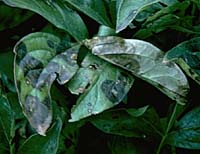
Cause of the disease
Phytophthora cactorum causes phytophthora blight in peonies. These fungi germinate and live in moist soils. This is why the infection is prevented primarily by keeping the plant moisture-free and draining the soil well.
Treatment
In case the plant is already infected, either the infected part of the plant should be cut off or the plant should be removed based on the degree of infection.
Bonide Captain Jack's Neem Oil is a MULTI-PURPOSE BUG KILLER – Bonide Neem Oil is a perfect pest control solution for any garden dealing with mites, flies, mildew, and more. This product is a three-in-one fungicide, miticide, and insecticide.

Leaf Blotch or Measles
How to identify it
Leaf blotch is a term that encompasses various types of diseases. They show up as small red blots which might increase in size gradually and change color to purple blots. This can be seen on the leaves and stems with the chances of lesions in the latter. Much like other fungal infections, this one is attributed to moist conditions too. This fungal disease infects peony bushes in spring right before blooming occurs. It affects all the parts of the plant above ground.

What causes it?
These blotches are caused in peony bushes by a fungus called Cladosporium paeonae. This disease doesn’t prove fatal immediately, but when it sets in it can make the plant look unaesthetic. Recurrence over years affects the normal and healthy functioning of the plant.
How to treat it
In order to prevent these fungi from affecting peony bushes, fungicides should be used weekly till the flowers open. Macozeb is used for controlling these fungi. Various varieties of plants that are resistant to leaf blotch causing fungi are available. They can be bought to avoid fungi from attacking peony bushes. Proper air circulation must be maintained and it’s a good idea to water your peonies early morning.
Nematodes
Cause of the disease
Nematodes are ringworms and tapeworms. Root nematodes attack the root of the plant, while foliar nematodes attack the body of the plant above the soil level. Their symptoms are quite similar to other diseases and they are known to spread quickly.
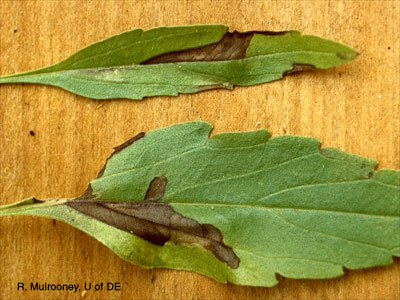
What it looks like
The symptoms start off as lesions on the leaves, which gradually turn brown and eventually black in color, after which the leaves fall off. Stunted growth, multicolored leaves, and bunching of leaves are various other symptoms.
Treating it
Stagnated water around the plant provides the ideal conditions for nematodes to move around and infect its host. It’s very important to keep the foliage dry so that it limits them from spreading. If the plant has already been infected, it should be removed. There are not many ways to treat nematodes using chemicals and pesticides. Nematicides are commercially available for use, but they are mostly unavailable to residential users.
Tips for planting peony bushes to avoid disease
Peony bushes are long-term plants. When the criteria for their healthy growth and development are met, they give great results and last as long as they are supposed to. Some best practices for planting peony bushes to avoid diseases are discussed below.
These plants need to be planted in areas exposed to 6-8 hours of full sun. The area should be sheltered such that it protects the flowers from direct wind and rains. The soil should be loamy, and there needs to be good air circulation and drainage. Proper air circulation ensures that the peony bushes dry well before night.
Keeping the soil optimally humid and the plant free from moisture is very important. The plant should be watered in the morning, giving enough time to let the plant surface dry off. This would ensure that the plant doesn’t serve as a seat for disease-causing fungi; overhead irrigation shouldn’t be an option in this situation.
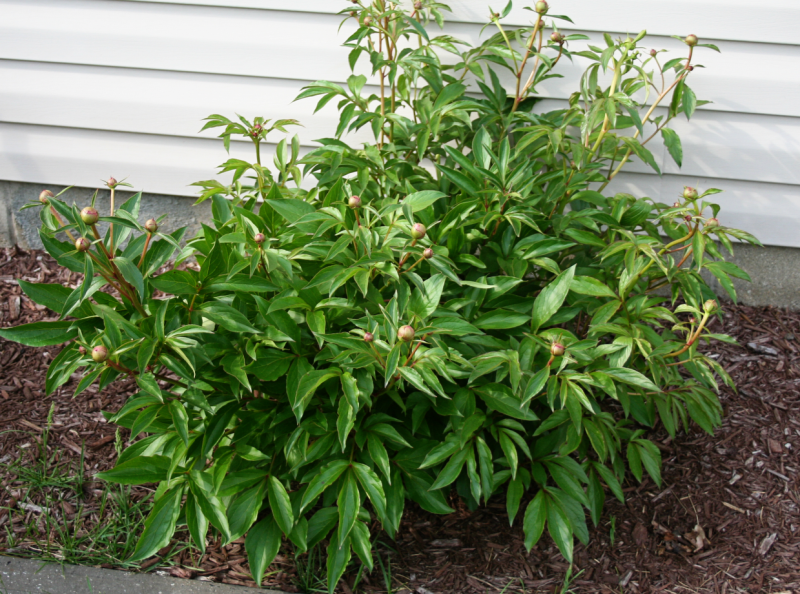
Since the soil is the channel through which a plant receives most of its nutrients, it’s very important that you nourish it with the right amount of organic matter. The soil should be cleaned from time to time and debris should be removed. If an infected plant had been planted in the soil, the soil should be replaced or thoroughly cleaned.
Any part of the peony plant that has been infected by fungi should be removed from the plant. This should be done from time to time in order to make sure the infection doesn’t spread. The plants should have enough space apart from each other so the disease doesn’t spread easily. Small plants should be two feet apart and standard ones should be four feet apart.
Taking care of peonies hassle-free
Peony bushes are tough perennial plants that provide grace to the gardens with their showy, beautiful flowers. Taking care of them in their growing years takes them a long way and helps them live up to a hundred years! For anyone who wants an impressive garden without working too hard on it, peony bushes are just right. They don’t need an out of the way approach of taking care.
The diseases discussed mostly don’t have a detrimental effect on the plants and can be gotten rid of by simply cutting out the diseased parts. Following simple techniques of planting peony bushes to avoid diseases suffices and promotes good health.
Frequently Asked Questions
What causes the black spots on peony leaves?
Black spots on peony leaves are caused as a result of watering the peony bushes from the top. Peony bushes absorb water through soil. They don’t need water to be sprinkled on their surface. If done so, they become an ideal environment for germination and growth of fungi. The fungi in turn cause these black spots that could be phytophthora blight.
Why did my peony not bloom?
Peonies take a long time to bloom. So the first thing to practice is patience. In case it’s been over time and these plants fail to bloom, it could be because the plant isn’t receiving the right amount of sunlight. Other reasons could be that it’s planted too deeply or has been recently transplanted. Excessive use of fertilizers may also hinder blooming. Other than these reasons, fungal diseases and extreme weather conditions can also lead to failure in blooming.
How do I prevent powdery mildew on my peony bushes?
Powdery mildew is caused by a fungus because of moist leaves. While powdery mildew would need fungicides to recover from the already caused infection, there are various preventive techniques. Peony bushes should be planted in a location where they are exposed to full sunlight. Too much mulch or creating a humid surrounding should be strictly avoided. If these points are kept in mind, peony bushes can be saved from being infected by fungi causing powdery mildew.
Why are peony leaves turning white?
Peony leaves turn white when fungi, like Podosphaera xanthii infect the leaves. They do so by forming a white chalky layer over the leaves and feed on the live tissues. As they cover the leaf, the leaf fails to carry out the process of photosynthesis.
What if I have ants on my peony flowers?
Ants are attracted to peony flowers as a result of the sweet substance that flowers produce. They are harmless as long as they don’t suffocate the flower.
Why should peony bushes be kept dry?
Water, and specifically moisture is the most conducive medium for fungi and other microorganisms to attack, infest, and feed on leaves and other parts. Keeping peony bushes dry and soil well-drained is very important to help them escape the possibility of being infected.
Bonide Captain Jack's Neem Oil is a MULTI-PURPOSE BUG KILLER – Bonide Neem Oil is a perfect pest control solution for any garden dealing with mites, flies, mildew, and more. This product is a three-in-one fungicide, miticide, and insecticide.


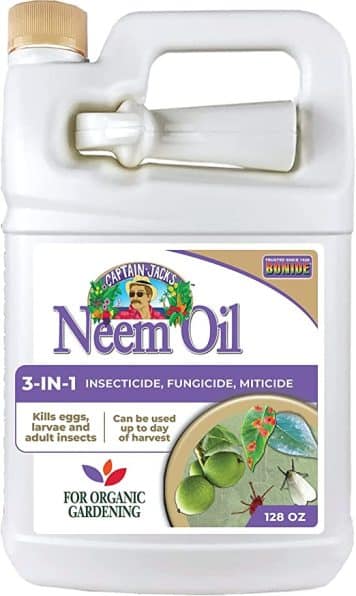

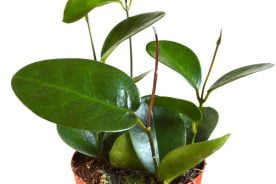
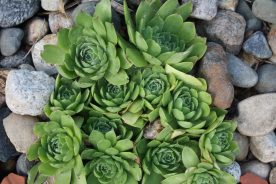

No Comments